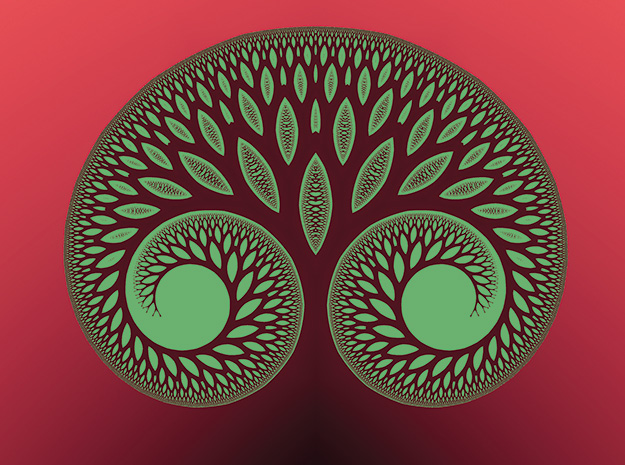By Venta Rutkauskas —
Falling Home
Land from a fall from grace
Cradled in moss’ embrace
Repose in that belonging
Rise up, unclench your fist
Drink in the balsam fir mist
Digest the medicine, repair
Kiss the bark of this Hemlock tree
Where the afterbirth is buried deep
Mother and child planted
The hole is marked with stones
It’s here that ‘home’ was sown
Anchored by living cells now a web of life

Autumn signals transition, a fitting time of year to contemplate letting go. There are so many ways we can and sometimes must move on. Like selling a beloved home: even though it is still treasured, it’s time to go. Nature’s autumnal rhythms speak of gentle surrender and wilting, as the plant world lays down to rest. In a culture that rewards strong work ethic, it is too easy to neglect the beauty and power of yielding or saying goodbye. Though we witness the trees effortlessly dropping leaves, the experience of letting go is oft met with great resistance. All year, I’ve observed the subtle and overt reactions that arose as I prepared to say goodbye to a home I’d lived in with my family for 13 years.
After leaving Montreal and my childhood home at age 20, I’d drifted and embraced the freedom of a rootless lifestyle. An invitation to move into the woods of the Cariboo a decade later tempted this city girl into uncharted territory. Fraught with friction and hard work, the transition was an effort. Yes, quiet, calm and peaceful environments nourish a soul, but so do world class arts, gourmet foodmarkets and regular dinner parties! Simplicity of nature and life in the country threw me for a loop, exposing a mental and spiritual landscape that crackled and spit when left to wrestle with the silence and Self. I did not know how to ground. In response to my restlessness, the forest accompanied me on a path of awareness and healing as though it were my teacher. As the saying goes, chop wood, carry water…
When my daughter was born, I recognized an impulse to truly embody. Her birth magnified the evidence of living outside of my body for most of my life. It showed up as anxiety and exhaustion, symptoms of exile, really; but these were matched by a fierce new love affair with my daughter whose presence inspired me to ground. Current definitions of grounding include a direct connection to the earth and complete presence in the body. Emotions like safety and worthiness accompany the state, telling us that we belong here. I wanted to belong for my daughter, to model safety and strength while also manifesting vulnerability and surrender. I longed to be a Tree of Life.
When we planted the placenta under the hemlock tree on our acreage, true roots finally emerged. The place became a shrine. The circle of stones used to cover the hole slowly sank and pressed into the earth over the years and shaped themselves into a beautiful yoni. My daughter and I merged our cells with the underground, an alchemical process that brought me ‘home’. We visited the spot on a regular basis. Trees grow slowly, of course, yet this process offered me a ritual beginning for belonging.
Now, leaving this place behind, I am more aware of the relationship we can have with our planet and the gifts this relationship can offer to our belonging. The significance of ancestral ties to a landscape, where generations have planted themselves, can be understood through the lens of identity, where the sense of land and self are an intricate web.
How do we conceptualize ‘home’ in a world where so many are forced from theirs through conflict or climate crisis? How does one uproot and still carry the powerful ally of belonging within their being?
For me, this curiosity and inquiry are company on a journey to new home, as I wrap my roots around me and carry the palpable vibration of that place where my daughter and I are buried.
If you are drawn to explore the theme of ‘Belonging’, I recommend Toko-Pa Turner’s book Belonging: Remembering Ourselves Home.
Venta Rutkauskas is the co-ordinator for the Community Arts Council of Williams Lake (CACWL). She is an advocate and lover of the arts and has taught drama and written plays for young children. She is also passionate about the healing arts. Visit www.williamslakecommunityartscouncil.com to learn more about CACWL and local artists.

